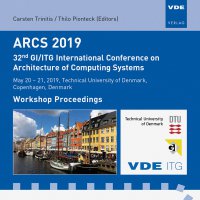Measuring Safety Critical Latency Sources using Linux Kernel eBPF Tracing
Conference: ARCS Workshop 2019 - 32nd International Conference on Architecture of Computing Systems
05/20/2019 - 05/21/2019 at Copenhagen, Denmark
Proceedings: ARCS Workshop 2019
Pages: 8Language: englishTyp: PDF
Personal VDE Members are entitled to a 10% discount on this title
Authors:
Thomeczek, Ludwig; Attenberger, Andreas; Kolb, Johannes (Corporate S&T Software, Continental Automotive GmbH, Regensburg, Germany)
Matousek, Vaclav (Department of Computer Science and Engineering, University of West Bohemia, Pilsen, Czech Republic)
Mottok, Juergen (Laboratory for Safe and Secure Systems, Ostbayerische Technische Hochschule Regensburg, Regensburg, Germany)
Abstract:
With the advent of new, ever more complex requirements for the automotive industry and its suppliers (mainly arising due to a demand for fully autonomous driving), a gradual shift from the established software architecture and hardware on to complex multi-core embedded microprocessors and complex (POSIX-compatible) operating systems is happening. As a highly competitive sector, the pressure to reduce manufacturing costs and part count additionally forces a consolidation of more functions into one single, higher performance embedded computing unit(often from different suppliers and with different base system requirements), while still requiring state-of-the-art functional safety and certification (ASIL, ISO26262). As a direct consequence, a coexistence of (soft-)real-time components and lower priority software on the same hardware leads to a mixedcriticality system. The latencies achievable in this system directly influence the safety, and two OS-related sources of latencies in a sample automotive framework architecture will be quantified using bpftrace, a Linux Kernel tracing solution. For one of the latencies, a separate validation using A/B tests will be performed, and we can show the reliability and low overhead of bpftrace for latency tests in the kernel.


